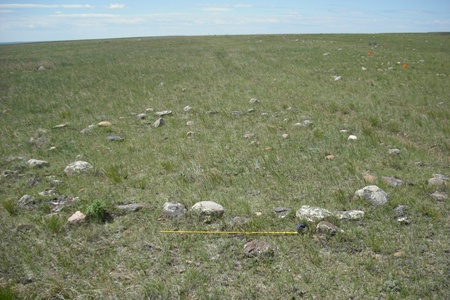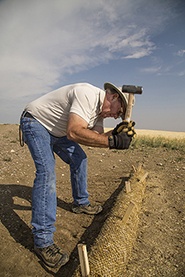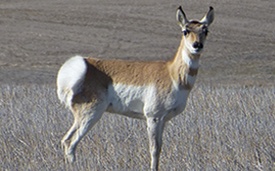Overview
 The Kevin Dome Project’s permitting compliance strategy is to identify regulatory requirements early, incorporate them into the design process, ensure permit stipulations are followed in the field, and maintain working relationships with agencies and local landowners.
The Kevin Dome Project’s permitting compliance strategy is to identify regulatory requirements early, incorporate them into the design process, ensure permit stipulations are followed in the field, and maintain working relationships with agencies and local landowners.
Landowner Relations and Local Presence
It is important that BSCSP maintains amicable relationships with local residents near the Kevin Dome Project area. The Kevin Dome Project would not be possible without the cooperation of nearby landowners and community officials. Project managers have made concerted efforts to establish trusting relationships with local residents through open-house meetings, newsletters, one-on-one meetings, and regular communication. The project team attributes much of the positive landowner relations to establishing a field office in town and hiring a local field manager. Having a consistent presence in the community has proven invaluable for project relations and has assisted with obtaining landowner permits.
A permitting compliance specialist was also hired to evaluate regulatory requirements for upcoming project activities. This individual is involved in the design, planning, implementation, and monitoring phases of all permits. In coordination with the field manager, the permitting compliance specialist helps ensure field crews adhere to permits and regulations during construction and operations.
Protection of Environmental and Cultural Resources
 From the onset of the project, BSCSP was aware of protected environmental, biological, and cultural resources in the field area. In order to avoid disturbances to cultural and historic resources, project managers worked closely with the Department of Energy (DOE), Montana State Historic Preservation Office (SHPO), and representatives from nearby tribes to develop a Programmatic Agreement that outlines the policies and procedures to avoid and minimize impacts to cultural resources.
From the onset of the project, BSCSP was aware of protected environmental, biological, and cultural resources in the field area. In order to avoid disturbances to cultural and historic resources, project managers worked closely with the Department of Energy (DOE), Montana State Historic Preservation Office (SHPO), and representatives from nearby tribes to develop a Programmatic Agreement that outlines the policies and procedures to avoid and minimize impacts to cultural resources.
Additionally, there were several wildlife-related stipulations for the project, providing added measures to limit effects to migratory birds, bald and golden eagles, black-footed ferrets, Sprague’s pipit, and grizzly bears. Project activities involving construction or seismic work are scheduled to avoid the migratory and breeding season when possible. Other preventative actions include avoiding preferred habitats, installing reflective bird tags on permanent guide-wires, using freshwater-based drilling muds, installing netting over reserve pits, and maintaining a clean work area free of trash and debris that may attract bears or other wildlife. Other seasonal factors include working around the timing of landowner farming activities like tilling, seeding, and cropping. By being proactive and communicating these requirements to onsite contractors, BSCSP has successfully minimized the effects on wildlife species and crops.
Compliance Training of Staff and Field Crew
 Due to the diversity of stakeholders, personnel, and government agencies involved with the Kevin Dome Project, it is critical to ensure that all involved team members are aware of the suite of permitting compliance regulations and stipulations. To achieve this objective, project managers have emphasized contractor training, education, and awareness to promote the project’s “100 percent compliance” policy. For example, every person involved in the project goes through three mandatory trainings on: 1) project orientation, 2) cultural awareness and 3) health, safety, and environmental education. Increased and consistent communication, including regularly scheduled conference calls, daily correspondence, and face-to-face meetings, has proven a successful strategy to ensure compliance.
Due to the diversity of stakeholders, personnel, and government agencies involved with the Kevin Dome Project, it is critical to ensure that all involved team members are aware of the suite of permitting compliance regulations and stipulations. To achieve this objective, project managers have emphasized contractor training, education, and awareness to promote the project’s “100 percent compliance” policy. For example, every person involved in the project goes through three mandatory trainings on: 1) project orientation, 2) cultural awareness and 3) health, safety, and environmental education. Increased and consistent communication, including regularly scheduled conference calls, daily correspondence, and face-to-face meetings, has proven a successful strategy to ensure compliance.
